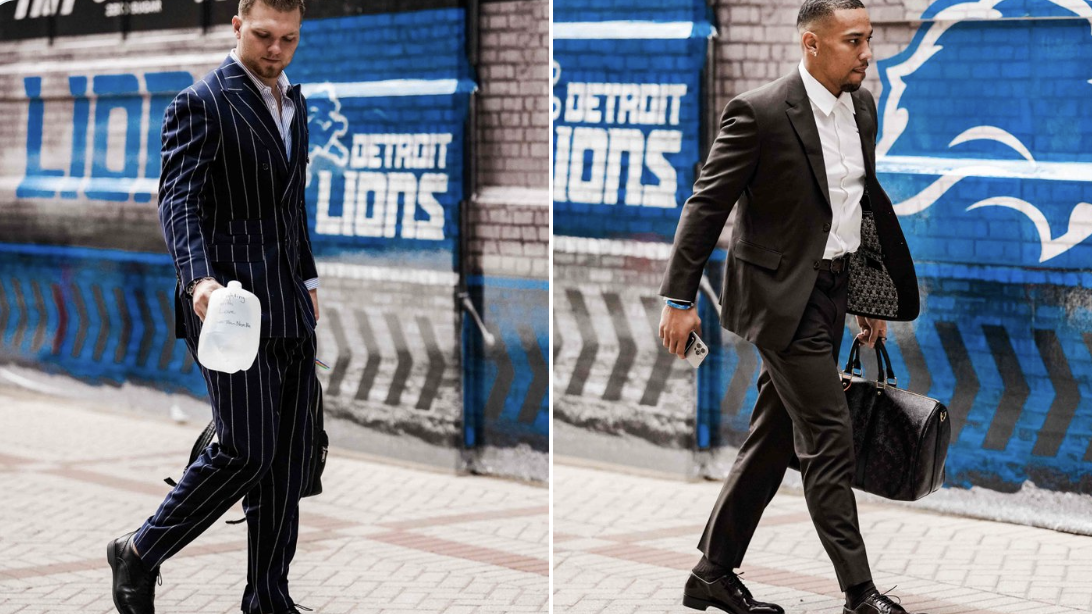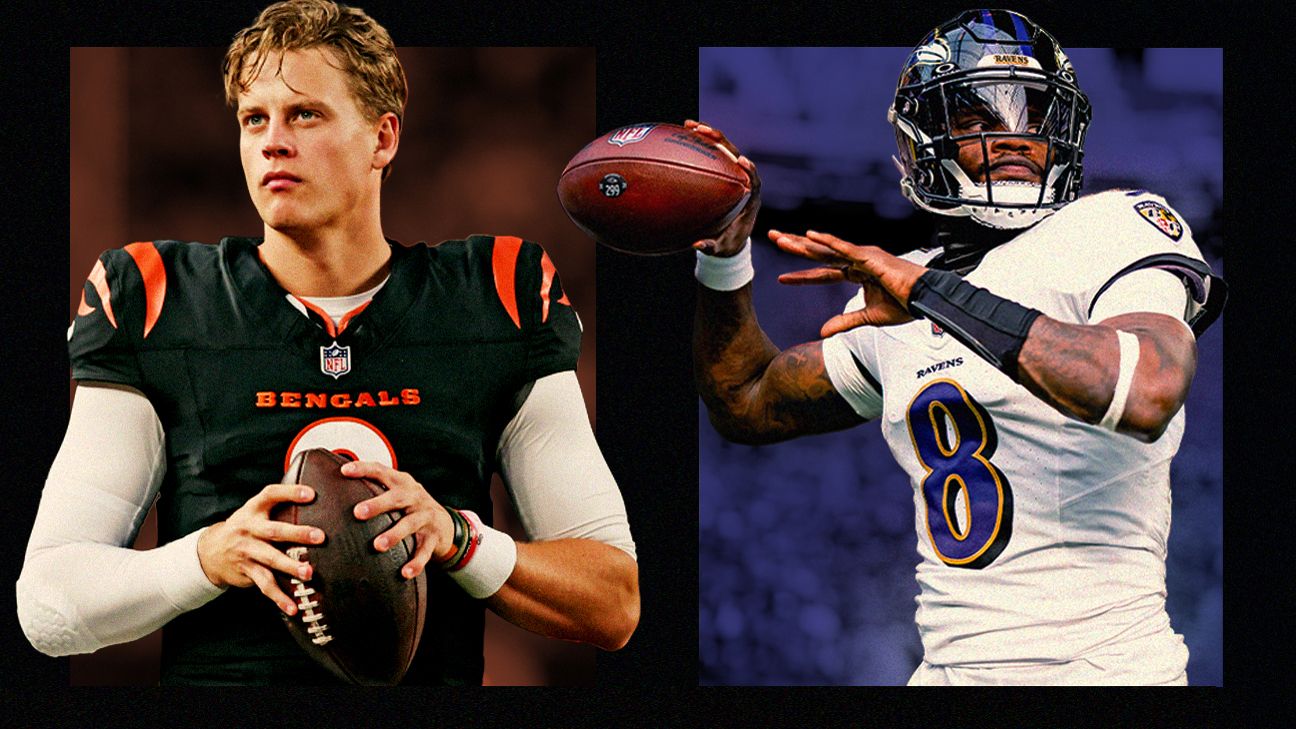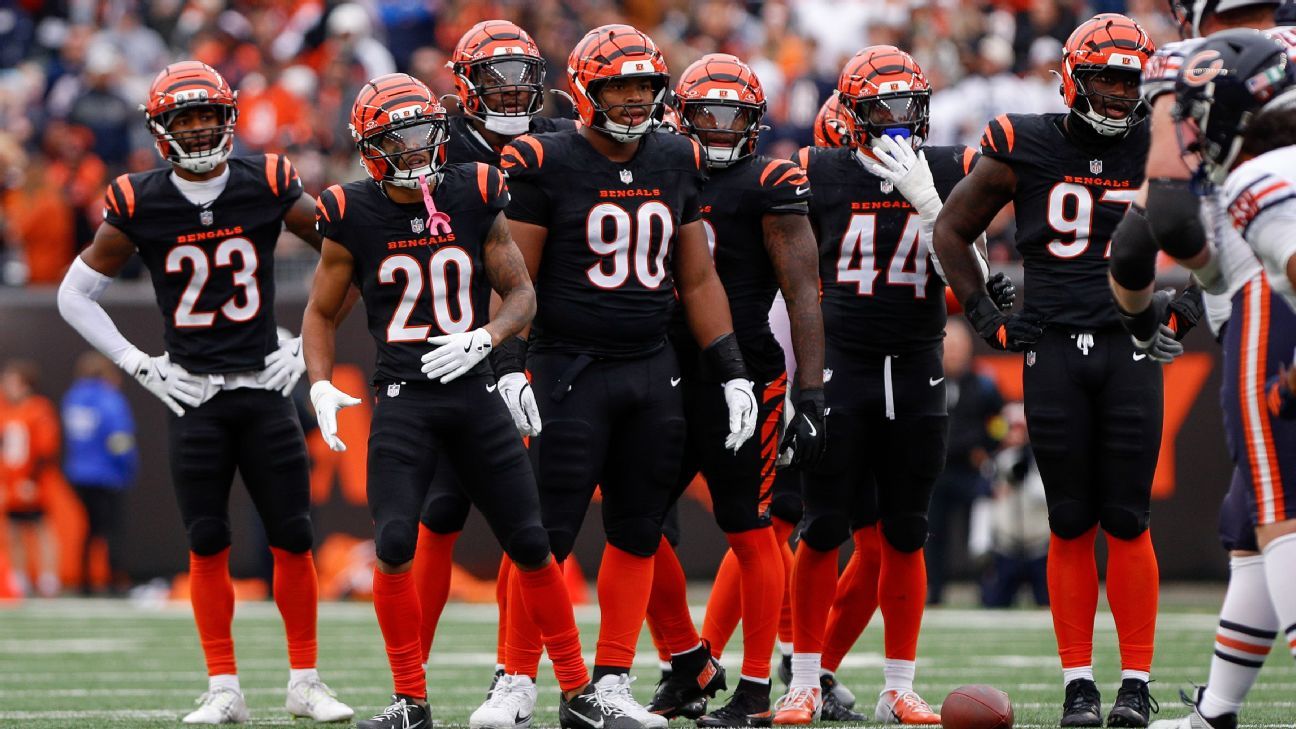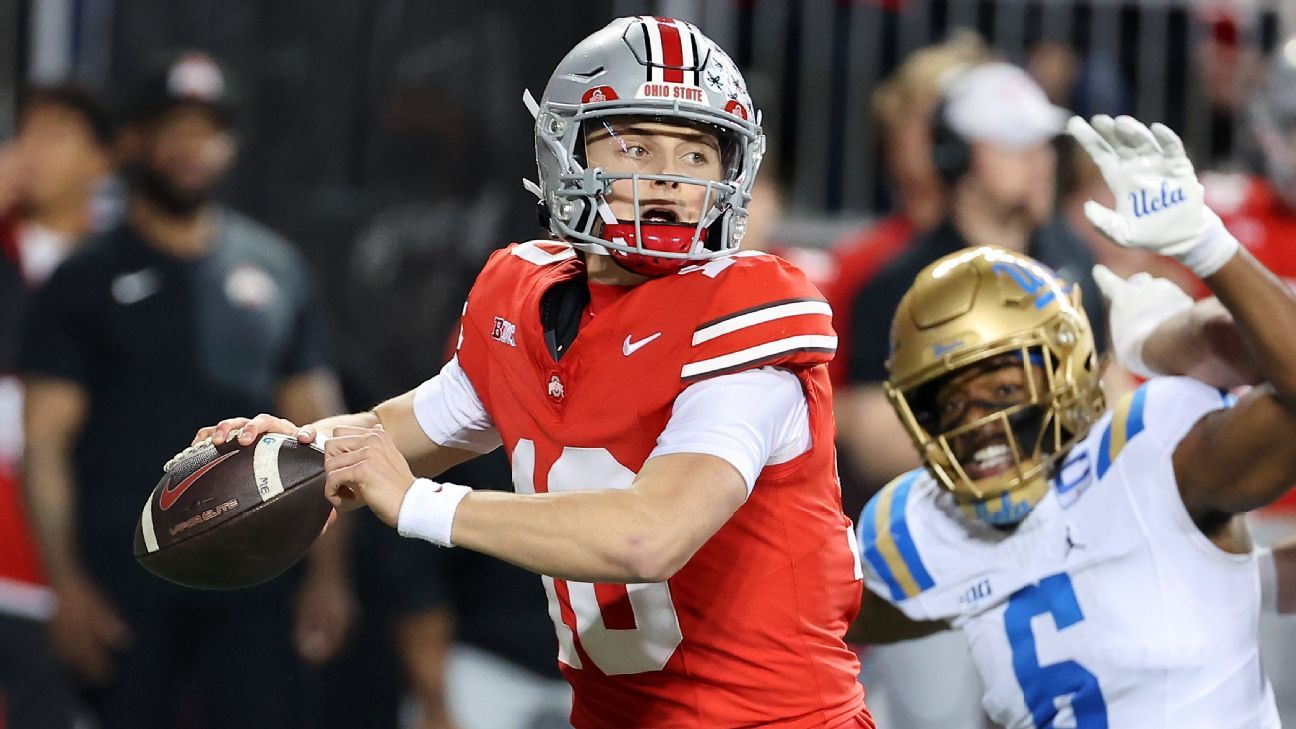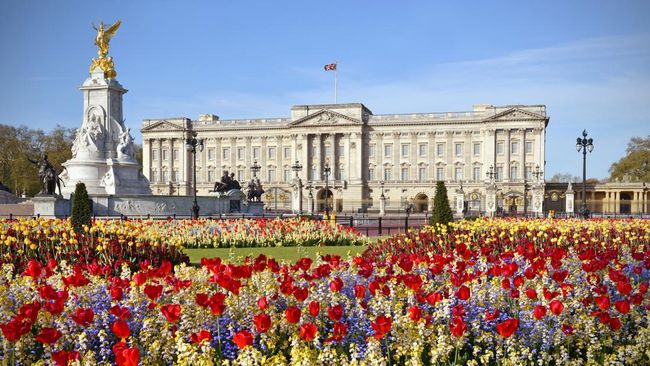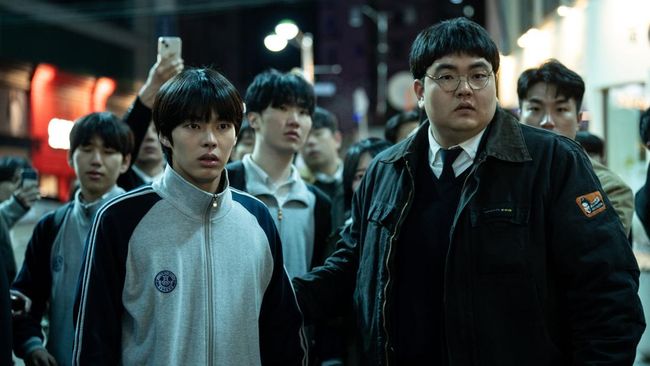
Nate TaylorNov 27, 2025, 06:00 AM ET
KANSAS CITY, Mo. -- Well before he donned the Kansas City Chiefs' uniform, quarterback Patrick Mahomes thought he was pretty familiar with the franchise.
Mahomes grew up in Tyler, Texas, about 100 miles from Dallas, which led to him becoming a Cowboys fan in middle school, but he said he also loved watching some of the Chiefs' biggest stars -- running backs Jamaal Charles and Priest Holmes, tight end Tony Gonzalez, receiver Dante Hall and linebacker Derrick Johnson.
"But I really didn't know the history of the Chiefs," Mahomes said, "and how it started."
A few months after Mahomes was drafted No. 10 by the Chiefs in 2017, the franchise held an introductory dinner for its rookie class. One person who spoke to the group was Clark Hunt, the club's owner and son of Lamar Hunt, the man who founded the franchise. A historical fact that astonished Mahomes that night was when Clark Hunt shared how the Chiefs didn't originate in Kansas City, but rather in Dallas.
"I didn't know anything about the Dallas Texans," Mahomes said. "It was cool for me because the Hunts are obviously from Dallas and that's where I live in the offseasons. Even though I grew up a Cowboys fan, you get to be a part of something that has history in Dallas."
That's why Thursday's game in Dallas against the Cowboys (4:30 p.m. ET, Fox) holds special significance for Hunt and the rest of the Chiefs organization. The stage -- Thanksgiving afternoon in front of a national audience -- is the latest reminder of how far the franchise has come since being formed in 1960 and how each team's history is intertwined. Lamar Hunt, who died in 2006, formed the Texans -- and helped create the rival AFL -- after the NFL denied him the opportunity, on multiple occasions, to bring an expansion team to Dallas.
Then came the Cowboys, who eventually forced Hunt to move his franchise to Kansas City in 1963. Since then, the Chiefs have focused much of their attention on trying to catch up to the Cowboys in relevance, excellence and popularity -- a pursuit that continues today. The Chiefs were the first of the two to reach the Super Bowl (Super Bowl I), but the Cowboys followed that with a run of their own success in the 1970s that led to them being dubbed America's Team in 1978. They bolstered that claim with a dynastic run of Super Bowls in the 1990s.
Led by Mahomes, Kansas City took the forefront in the 2020s, winning three Super Bowls and appearing in two others. Along the way, the Chiefs have been open in their quest to one-up their neighbors, who are about 510 miles south, in popularity.
"We've been very transparent in our desire to become the world's team," Hunt said in early September. "A big part of that is growing the Chiefs Kingdom all over the globe."
Despite playing just 12 times since the 1966 AFL-NFL merger, the competition between the two franchises is deeply rich, including hotly contested battles over signing players, oddly familiar postgame cries from a pair of iconic coaches and a makeshift wooden trophy shared between owners who once lived on the same Dallas-area street.
"When I first got here, I was very surprised," Mahomes said. "That's an under told rivalry."
WHEN LAMAR HUNT founded the Texans, the NFL at the time had just 12 teams. Some owners, including George Preston Marshall of the Washington franchise, believed adding more teams, especially south of the Mason-Dixon Line, would've cheapened the on-field product.
On July 29, 1959, the AFL announced that its eight-team league would begin in 1960. The NFL -- in less than three months -- responded by going after Hunt, the son of H.L. Hunt, an oil tycoon, in a direct manner. The NFL agreed on Oct. 19, 1959, to have Clint Murchison Jr., the son of an oil tycoon himself, be one of the new owners of the newly formed Dallas Cowboys.
Murchison then chose to have the Cowboys' primary colors be blue and white after the Texans revealed their colors to be red and gold.
"Of course, the best way to put the AFL out of business would've been to put the Dallas Texans and Lamar Hunt out of business because it was his brainchild," Clark Hunt said of his father.
When the 1960 seasons began, Tex Schramm, the Cowboys president, made it clear in a news conference that he didn't believe Dallas could support two teams, thus setting the expectations that the teams were going to have to battle over who could build a stronger fan base.
"I was one of the foremost warriors, if you want to call it that," Schramm said in an NFL Films video in 1994. "As far as I was concerned, it was a war -- and I still don't like the AFL [or AFC]."
The Cowboys announced that their ticket price was $3.90, the same price as SMU, the city's college team. Lamar Hunt responded by announcing that the Texans' price was $4, suggesting his team's product was worth more than his competitor.
"We were more major league than they considered themselves to be," Hunt said to Michael MacCambridge in his 2012 book, "Lamar Hunt: A Life in Sports." Hunt added: "There wasn't a thing in the world [the Cowboys] could do about it, once we had said $4."
The Texans had plenty of promotions -- the Spur Club for businessmen who sold tickets, free tickets for high school students, and even popular actress Kay Sutton as the team's queen, often riding in a convertible around the field before kickoff and twirling a baton at halftime. Attendance, though, declined throughout the franchise's first two seasons by more than half from the Texans' first game, which drew 42,000 fans. Many of their home games in 1962, inside the Cotton Bowl, featured fewer than 10,000 fans. As a result, Hunt's franchise in three years lost more than $1.2 million ($12.9 million today, according to the Bureau of Labor Statistics).
On the field, however, the Texans (25-17) outpaced the Cowboys (9-28-3) in building a winner through three seasons. Midway through the 1962 season, Hunt, realizing his team couldn't clearly beat the Cowboys at the gate, considered moving his franchise. In the AFL Championship Game on Dec. 23, 1962, a dramatic matchup that featured two overtimes, the Texans -- led by coach Hank Stram, quarterback Len Dawson, running back Abner Haynes and safety Johnny Robinson -- beat the Houston Oilers 20-17 for their first title.
The next day, on Christmas Eve, Hunt received an urgent message from Harold Roe Bartle, the mayor of Kansas City, Missouri.
Bartle desired to attract the team to have Kansas City become a more respected city -- instead of being known as just a cow town. He negotiated a persuasive deal, too, letting the team lease Municipal Stadium and its office space for only $1 a year for the first two years. Hunt was also convinced to move the Texans after Kansas City's leaders promised to sell 25,000 tickets (they secured 13,500 tickets before the 1963 season).
Known for his creativity and cleverness, Hunt presented the Cowboys with an idea: He wanted his crosstown rival to purchase the Texans' practice facility. The Cowboys agreed and also paid the Texans $246,500 for their moving expenses, as part of the deal for them to be the lone team in Dallas.
With a new city and new name, Hunt knew exactly how to rebrand the team to new fans.
"We aren't really just Kansas City's team," Hunt said. "We call our team Mid-America's Team."
ALTHOUGH HIS FRANCHISE relocated to Kansas City, Hunt continued to compete against the Cowboys.
One of the biggest examples occurred in the early 1960s. At that time, teams in the AFL and NFL competed to acquire the best players, especially college stars. One of Hunt's best decisions was in 1963, when he hired Lloyd Wells, the first full-time Black scout in professional football, to help the Chiefs draft and sign players from HBCUs during an era when most pro teams lacked proper integration. In 1963, Grambling defensive tackle Buck Buchanan became the first Black player to be drafted No. 1 in either league as he embarked on a Hall of Fame career.
In November 1965, the Chiefs and Cowboys realized they wanted the same player: Prairie View A&M receiver Otis Taylor.
Two days before the AFL draft, a Cowboys scout arrived at the HBCU and invited Taylor and Seth Cartwright, his teammate, to spend Thanksgiving Day in the Dallas area. Playing the role of a detective, Wells learned that Taylor and Cartwright were staying at a Holiday Inn in Richardson, Texas. Wells, posing as a journalist from Ebony magazine, convinced Taylor and Cartwright to sneak out of the back balcony of their room. The trio then flew to Kansas City. The next day, Taylor signed with the Chiefs as their fourth-round pick.
A few months later, under the recommendation of NFL commissioner Pete Rozelle, Hunt met with Schramm in Dallas. The two men discussed and put together the initial agreements that later became the AFL-NFL merger, which was announced June 8, 1966. One of the first major meetings following the merger was about the first AFL-NFL Championship Game. In the meeting, Hunt gave the NFL's grandest game a proper name, spontaneously calling it the Super Bowl.
"Personally, I think it'll be one of the biggest sporting events of the year, every year, in America," Hunt said the day the merger was announced.
With Taylor on their roster, the Chiefs reached Super Bowl I. On Jan. 1, 1967, the day the Chiefs clinched their spot, following a blowout win against the Buffalo Bills, Hunt, Stram and the players returned to the team hotel to watch the NFL Championship Game between the Cowboys and Green Bay Packers. Hunt wanted the Chiefs to play the Cowboys. Instead, Dallas fell 35-10.
"My dad was somebody who had a vision for what things could become," Clark Hunt said. "Certainly, his vision for what a bigger NFL could look like has become a reality."
The Chiefs' last game as an AFL representative was in Super Bowl IV, the final game before the merger took effect in the 1970 season. The Chiefs were victorious, beating the Minnesota Vikings 23-7 for the franchise's second championship and first Super Bowl title. That day, though, was the last time Lamar Hunt witnessed his team lift a trophy.
The tables began to turn in 1970, the year the two teams played against each other for the first time. The Cowboys won 27-16. During the decade, the Cowboys reached the Super Bowl five times, winning two championships under coach Tom Landry and quarterback Roger Staubach. The success of the Cowboys, along with Dallas' booming growth as a city, led to them, in an NFL Films video in 1978, being called America's Team, the NFL's most glamorous franchise.
The Chiefs experienced a resurgence in the 1990s when Hunt hired general manager Carl Peterson and coach Marty Schottenheimer. The franchise -- starring future Hall of Famers such as quarterback Joe Montana, running back Marcus Allen and outside linebacker Derrick Thomas -- made the postseason seven times in the decade, reaching the AFC Championship Game in 1993. But the Chiefs never reached the Super Bowl -- and the possibility of what would've been a much-anticipated matchup against the Cowboys.
In Dallas, the 1990s were the golden era of the Cowboys. Led by owner Jerry Jones, who purchased the club in 1989, the Cowboys, under coach Jimmy Johnson, won three Super Bowls in a four-year stretch. At the start of the Cowboys' dynastic run, following the team's victory in the 1992 NFC Championship Game, a gleeful Johnson, while inside the visitors locker room, coined the team's iconic phrase: "How 'bout them Cowboys?!"
From there, the Cowboys became so profitable, popular and marketable -- with Hall of Famers such as quarterback Troy Aikman, running back Emmitt Smith, receiver Michael Irvin and cornerback Deion Sanders -- that the franchise eventually became one of the world's most valuable sports teams. And in 2016, it surpassed the New York Yankees and Real Madrid for No. 1, according to Forbes.
Even though Hunt and Jones were opposed on many topics, including licensing and marketing deals that teams could make that were separate from the league's revenue-sharing policies, the men became friends, finding commonality and respect through each of their resourceful, innovative personalities.
"One of the neatest things that I was involved in for years was with Lamar Hunt," Jones said in an NFL Films video in 2015. "Lamar said, 'How would you like to do a circuit with me talking about an [original] owner and a founder and you talking about a new owner and coming in?'
"So we would get up and we would look like a vaudeville team up there, but we would be talking about the league and the positive effect of the merger."
Hunt and Jones were neighbors, too. In 1998, before the Chiefs faced the Cowboys, Hunt had the idea to create the Preston Road Traveling Trophy, a small, homey decoration that was named for the Dallas street where both men lived. The trophy cost less than $100 to make. It features a pin and magnet for the Chiefs and the Cowboys and a plaque to display the trophy's bragging rights.
Whenever the Cowboys beat Chiefs, Jones would place the trophy in a front window of his house, displaying it so that Hunt would see it whenever he drove by.
"I know Jerry got such a kick out of it," Peterson told ESPN in 2017. "It was just a wooden trophy, but it was important. Lamar certainly enjoyed it. ... Lamar never, ever forgot that rivalry."
Although the Cowboys lead the series against the Chiefs, winning seven of the 12 matchups, the trophy has spent the past four years inside Clark Hunt's office in Dallas.
IN AUGUST, THE Chiefs' history and the team's 2024 season -- in its attempt to become the first team in the Super Bowl era to three-peat -- were chronicled in a six-part ESPN documentary series titled "The Kingdom."
Five days after "The Kingdom" premiered, the Cowboys documentary "America's Team: The Gambler and His Cowboys," an eight-part series starring Jones, premiered on Netflix.
One of the most unique scenes in the Chiefs documentary was filmed in early January. The Chiefs' trio of stars -- Mahomes, tight end Travis Kelce and pass rusher Chris Jones -- became the first players in the team's history to tour the franchise's large archival collection, which is held inside Kansas City's SubTropolis, the world's largest subterranean business complex that was also the brainchild of Lamar Hunt.
Clark Hunt and team historian Bob Moore showed the players several artifacts, including Lamar Hunt's handwritten notes that he took in 1959 on stationery during an American Airlines flight, which were his ideas for the creation of the AFL.
Almost eight years after learning about the Dallas Texans, Mahomes was able to see and hold items from the team's history that were more than 60 years old -- photographs of Lamar Hunt celebrating with the Texans, various versions of Stram's playbooks and the $48.50 game check that receiver Chris Burford earned Aug. 12, 1961, for a preseason game.
"It was crazy because I didn't know it existed," Mahomes said of the Chiefs' archives. "It was a cool, surreal moment."
The same night Mahomes learned that Hunt founded the Dallas Texans, he also learned -- and never forgot -- about the one trophy that the Chiefs, at the time, had never won.
"The most important thing for me was winning that Lamar Hunt Trophy," Mahomes said of the trophy given to the AFC champion each year.
From 1984, when the league renamed the trophy to honor his legacy, through the 2005 season, Hunt -- year after year after year -- was often the person who presented the trophy to an AFC team that wasn't his own.
"Clark was talking about how he wanted to bring that trophy home," Mahomes said. "I was like, 'Man, we've got to get that.' That was the first goal that I wanted to do. I remember talking to Clark, and he was like, 'Don't stop there; once you get that one, go get the big one.'"
Since Mahomes entered the NFL, the Chiefs have played in five Super Bowls, winning three Vince Lombardi trophies in a five-year span. Along the way, Mahomes has become a two-time MVP award winner and a three-time Super Bowl MVP.
In 2019, in just his second season as a starter, Mahomes achieved his first major goal when the Chiefs defeated the Tennessee Titans to reach Super Bowl LIV.
"That was really cool -- and then to do it with Norma," Mahomes said of Lamar Hunt's wife. "Getting to see her and holding that trophy, I know it was a special moment, not only for me but for that entire [Hunt] family."
Similar to the Cowboys of the 1990s, the Chiefs, in less than a decade, have surged in popularity and marketability, with stars such as Mahomes, Kelce and Jones leading to increased revenue, jersey sales and TV viewership (and, well, Taylor Swift might have a little sway, too). And just like Johnson did for the Cowboys, Andy Reid was the coach whom Clark Hunt hired in 2013 to rebuild the Chiefs into championship contenders.
Before the end of the 2015 season, when the Chiefs won their first playoff game in 22 years, Reid found an energizing rallying cry for his players. He began shouting, after each win in the locker room, a remix of Johnson's iconic phrase: "How 'bout those Chiefs?!"
"I'm not sure exactly where it came from," Reid said. "It just happened. All the guys got into it the first time, so we just kind of kept it going."
In the past decade, Chiefs fans, many from various countries, have also shouted Reid's phrase after the team's victories. The Chiefs opened this season in São Paulo, becoming the first NFL team to play a regular-season game in four different countries -- England (London, 2015), Mexico (Mexico City, 2019) and Germany (Frankfurt, 2023).
Hunt has expressed that it's his desire for the Chiefs to play in an international game every year, whether as a home team -- giving them one fewer game at Arrowhead Stadium -- or away team. Hunt is optimistic that the Chiefs' next international game, whether next year or in 2027, will be in Dublin.
Earlier this year, team president Mark Donovan shared that the Chiefs, according to the NFL's metrics, surpassed the Cowboys as having the league's largest fan base. A year ago, the Chiefs were the first NFL team featured in a Hallmark film -- "Holiday Touchdown: A Chiefs Love Story" -- and they have the league's largest following on TikTok (5.3 million).
"The NFL tracks [every team's] fan base," Donovan said in late July. "You can imagine in 2009 and 2010, we were looking up a long way to get into the top 10.
"As great as our fans are, you have the challenge of a smaller market, the challenge of not being really successful on the field. We've been able to do things off the field, innovative-wise, marketing-wise, the movies. Things like that have created a much bigger fan base. The cool thing about it for us and our strategy is that one of the reasons we're No. 1 is because we have a worldwide fan base."
One of the biggest differences between the Chiefs and the Cowboys is the demeanor of each owner. In many ways, Hunt is the opposite of Jerry Jones, who is also the Cowboys' general manager. Unlike Jones, Hunt doesn't have his own weekly radio show, doesn't conduct his own news conference with reporters after most games and often doesn't seek the spotlight.
On Thursday, though, Hunt and Jones will each want to exit AT&T Stadium with the one item connecting the two franchises: the Preston Road Traveling Trophy.
"I've heard of that," Mahomes said of the trophy, although he has never seen it. "We won the last time we played the Cowboys, so I'll try to keep that in the Hunt household."
.png)
 4 hours ago
2
4 hours ago
2

